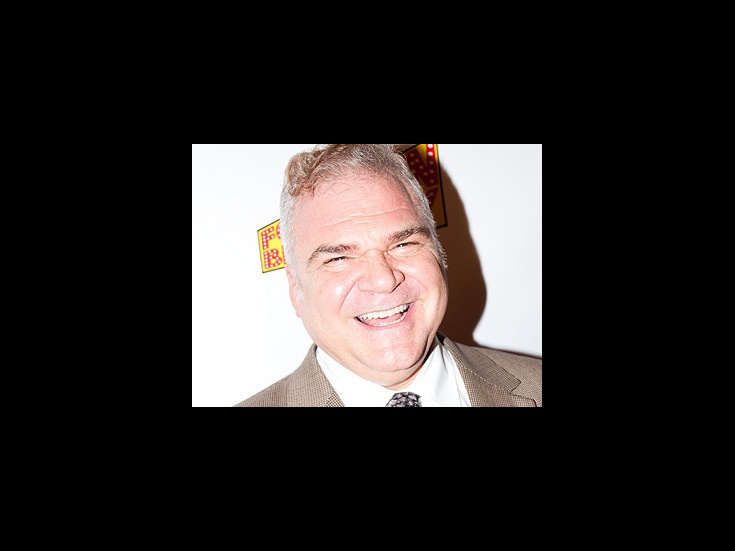Gerard Alessandrini on Three Decades of Skewering Stars and Winning Laughs in Forbidden Broadway
About the author:
When Gerard Alessandrini created and co-starred in Forbidden Broadway in 1982, he had no clue that his clever sendup of Broadway shows and stars would endure for three decades. The original revue created a sensation with its spot-on parodies of stars such as Carol Channing and Julie Andrews and shows such as Annie. Just in time for the red-headed orphan’s Main Stem comeback, Forbidden Broadway: Alive & Kicking, has just opened at the 47th Street Theatre, and all we can say is: Watch out, Matthew Broderick, Mandy Patinkin and Elena Roger! Alessandrini has taken home a slew of awards for his work over the years, including a Tony Honor for Excellence in the Theatre, and he took time to share a few FB secrets with Broadway.com.
![]()
Forbidden Broadway began 30 years ago as a way for me to sing show tunes with my friend Nora Mae Lyng. We were young actors at the time, auditioning and doing stock and dinner theater. Nora is a brilliant comedienne with a fabulous voice, and I was a pretty good singer back then, too. I had written parody lyrics as a teenager, just for fun, and it occurred to me that Nora and I could sing them at a club. We would be performing fresh material, but at the same time, Nora could do “Don’t Cry for Me, Argentina” and I could sing songs from The Pirates of Penzance. As we rehearsed, it became apparent that we had the makings of a good show.
By the time we began performing upstairs at Palsson’s Supper Club on West 72nd Street, we had added a couple of friends to the cast so we could perform duets and trios. Our unofficial opening was January 15, 1982, before an audience that consisted mostly of our friends and relatives. It was the same basic set-up you see today: a Mylar curtain, minimal costumes and a Forbidden Broadway sign. The audience roared, and soon people like Hal Prince, Sondheim and Comden & Green were coming to see us, along with celebrities like George Burns, Mary Martin, Ann Miller and Cher. After a rave review from Rex Reed, we became a sold-out hit for a year and a half.
As the run continued, I began updating the show. We added a funny Dreamgirls spoof, and at Carol Channing’s request, I wrote a number centering on her that we did for years. Although I wrote a famous parody of Mandy Patinkin, it wasn’t during the run of Evita or Sunday in the Park—I waited until he did his one-man show, which was stunning and unique but also put a big red target on his back. Since then, Mandy has been a favorite of ours and pops in and out of the show.
The vast majority of actors portrayed in Forbidden Broadway consider it a compliment. They’re big stars, or in hit shows, so we’re kicking people when they are up, not down. Raul Esparza was nervous when he came to see himself lampooned five years ago during the run of Company. But afterward he told me, “I had to remember that the next number was Ethel Merman, and the one after that was Bernadette Peters. I’m being included in that category of stars.” I also think people in the theater develop thick skins because the press is harder on them than on actors in any other medium. Anything our cast does onstage, they’ve already heard!
I find it hilarious that Annie and Evita were the two big shows when we first did Forbidden Broadway, and now they are both back. Our parodies are different—the Evita one is about Ricky Martin and Elena Roger, and Annie’s is about being an old show—but we are able to use almost the same costumes. There are also lots of new shows and stars to spoof since the last edition three years ago: The Book of Mormon, Sutton Foster, Catherine Zeta-Jones in A Little Night Music and current shows like Once.
People ask if I’m thinking of parodies when I watch a show on Broadway, and the answer is no. I love musicals, and I go to shows to enjoy them. And, quite honestly, the take that I present in Forbidden Broadway is not always my personal take. For example, we have a number in which Judy Garland criticizes End of the Rainbow star Tracie Bennett. It may seem like I didn’t like Tracie Bennett, but I enjoyed her performance very much. It’s just that we tried different ideas, and the funniest was, “What would Judy Garland say?” Putting together a sketch is more about what works for an audience and less about my gut reaction to a show.
As always, you don’t have to be a musical theater expert to enjoy Forbidden Broadway: Alive and Kicking. The show works on different levels: If you’re an insider, you might get jokes others won’t, but the lyrics explain everything you need to know. I used to call it “mother-proofing”—my mother only saw a Broadway show about once a year, but if I designed a skit so that she understood it and laughed at it, I knew I was home free.
 Gerard Alessandrini
Gerard Alessandrini